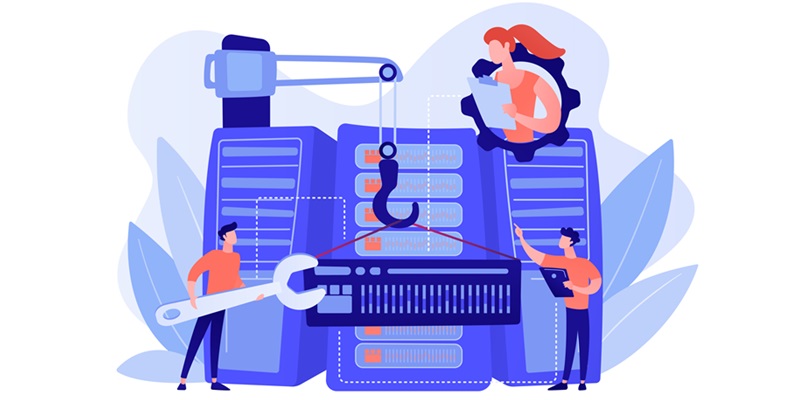The information technology landscape is rapidly changing, transforming data streams into overwhelming floods. IT operations are increasingly complex, dealing with massive data volumes and requiring advanced management methods. Dave Link, CEO and Co-founder of ScienceLogic, highlights the necessity for IT managers to incorporate Artificial Intelligence (AI) and automation into their strategies. This integration is pivotal for handling the data surge and capitalizing on the opportunities presented by the digital era. By leveraging these technologies, IT teams can navigate the deluge of information efficiently, ensuring their organizations not only survive but thrive amidst the constant influx of data. The strategic embrace of AI and automation is imperative for mastering the intricacies of IT infrastructures and unlocking new potentials within the field.
The Herculean Effort of Data Management in IT
In the face of rapidly expanding IT infrastructures, managing the tide of data flooding through the systems is a task of Herculean proportions. The traditional tools and methodologies that IT professionals have long relied on are straining under the weight of this task, their efficacy waning as the complexity of digital networks grows. The ability to sieve through real-time information and extract usable insights is becoming a scarce commodity. The additional challenge of multiple monitoring tools that sprawl across different segments of the technology stack only muddies the waters further, creating disparate pools of data that resist harmonious integration and timely decision-making.
This tool sprawl complicates the otherwise straightforward mission of detecting and fixing system hiccups. As teams become bogged down in silos due to fragmented monitoring approaches, their capacity to swiftly identify and amend malfunctions is compromised. With the diverse aspects of modern tech stacks monitored in isolation, the ability to see the broader picture of system health is obscured, leading to delays and inefficiencies with potentially significant repercussions for the entire business operation.
AI and Automation as Strategic Remedies
AI and automation are revolutionizing IT operations, offering solutions to manage overwhelming data flows. These technologies provide deep insight into complex systems, making it easier to identify and resolve problems. Automation facilitates quick fixes to system errors, while AI enhances the process by revealing trends and insights that human engineers might miss.
The development of AI for IT operations (AIOps) has led to increasingly user-friendly tools that guide users through the complexities of IT systems, highlighting essential operational metrics. These tools don’t only diagnose current issues; they predict future system behavior, allowing IT teams to preemptively address potential problems, thus maintaining operational stability and preventing costly downtime.
In this new AI-assisted era, AI acts like a copilot for IT professionals, helping them to deftly manage multicloud and distributed environments, ensuring maintenance tasks are carried out with great proficiency and ease.
Preparing for AIOps Implementation
Venturing into the realm of AIOps requires a recalibration of both mindset and methodology within an organization. The first step is cultivating an organizational consensus on the need for change. This goal should resonate across the board—from IT operations to DevOps—uniting all teams under the common aspiration to minimize downtime, optimize analysis, and streamline workflow. The path forward involves assessing and consolidating the existing tool sprawl, mapping out the intricate web of interdependencies that underlie the hybrid IT infrastructure, and guaranteeing that every component is accounted for in terms of monitoring and its relevance to business services.
The deployment of hybrid cloud monitoring strategies is crucial to establish comprehensive visibility, which, in turn, is a prerequisite for amassing the vast and varied data that will fuel the AI. The aim is to build a reservoir of rich, integrated data that is ripe for AI evaluation. As this preparatory stage unfolds, organizations must tackle the inherent complexities of their diverse toolsets, striving for a degree of simplicity that can facilitate the seamless operation of AIOps solutions. This process not only sets the stage for the introduction of AI into the tech ecosystem but also primes the infrastructure for the subsequent phases of enhanced automation.
The Synergy of AI and Human Expertise
Harnessing AI alongside human expertise transforms IT operations, enhancing efficiency and forward-thinking capability. AI’s analytical strengths anticipate issues, prompting automated workflows to respond with unmatched precision. This partnership liberates IT professionals to focus on strategic tasks requiring ingenuity. However, as operations increasingly rely on AI, humans must ensure the synergy of automated efficiency with insightful oversight, retaining a vital role amidst the shift toward full automation.
With an AI-infused approach, businesses edge closer to network automation, bolstering IT environments for the digital age. AIOps integration fosters a stable, innovative future, marrying technological evolution with the irreplaceable value of human judgment, guaranteeing that AI’s advances serve broader organizational goals. This is the foundation for an IT era where human oversight continues to steer, yielding better, more resilient systems.

